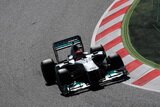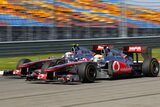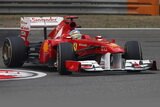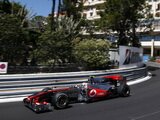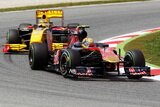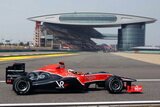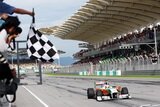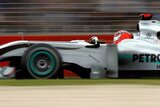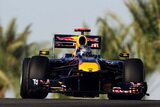Heikki Kovalainen, McLaren
"It looks pretty fast, to be honest. You get used to street circuits being quite slow, with lots of slow- to medium-speed corners and very short straights, but this is almost the opposite. There are a lot of fast kinks and esses, a couple of decent straights and lots of high-speed stuff. Its too early to say yet whether there will be opportunities to overtake around here, but there are a couple of hairpins where it might be possible."
Lewis Hamilton, McLaren
"We launched the Vodafone McLaren Mercedes team in (Valencia) at the start of 2007, and Ive tested at the Ricardo Tormo circuit so the city isnt unfamiliar to me. Anyway, going to a new circuit doesnt really change my preparations: everybodys in the same situation so I dont treat things very differently. Of course, weve done some preparation back at the McLaren Technology Centre ahead of this race, but our main focus will still be the three free practice sessions ahead of qualifying. Ill be working closely with my engineers to make sure we start the weekend with a good baseline and work hard to strengthen it as we go through the weekend. I enjoy visiting new racetracks and Im looking forward to getting into the cockpit on Friday morning. It looks like being an amazing track."
Martin Whitmarsh, McLaren Formula One CEO
"In terms of car set-up, we need to remember that, like Monaco, the track will be both green and dusty on the opening day of practice. That sometimes tempts you into playing with set-up more than you would like, so you need to resist that temptation and let the track come to the car. Our simulations suggest well employ a downforce level similar to that of Hockenheim, but the individual demands of the track may push that window up or down. Finally, anybody whos studied any onboard footage of the circuit will be mindful of the proximity of the concrete barriers in certain areas - clearly, well be packing plenty of spares, but hoping we wont need to use them!
"The most important thing is to be thorough, methodical and iterative. Although we arrive at a new racetrack having undertaken a huge amount of research and armed with an enormous amount of data, the reality is that its really only the starting point for our engineering team. We begin Friday practice the way we would at any other circuit, but in this instance, we need to pay particular attention both to driver feedback and the data generated from the car. The important thing is not to react too hastily - its vital that you dont end up going down the wrong path, because you only have a limited amount of time to tune the set-up before qualifying."
Norbert Haug, Vice President, Mercedes-Benz Motorsport
"When you think about temporary street races in Formula One, you mainly think about Monaco. However, Valencia does not have very much in common with this classic race; just that both cities are located on the Mediterranean coast and that both circuits lead along the harbour front. While the Monte Carlo race is the slowest of the year with an average speed of about 156 km/h for the fastest lap, and is also the shortest with a race distance of almost 254 kilometres, we face a race distance of 310 kilometres in Valencia and a track on which the cars will reach 300 km/h or more five times per lap. Three times per lap the drivers also have to brake to about 80 km/h which will be as extremely demanding for the brakes as the Montreal circuit. The longest full throttle section will be along the harbour where the drivers will drive at full throttle for 13 seconds. The front straight is 185 metres long and the shortest of all Formula One circuits this year. We calculated an average speed per lap of 225 km/h which will be the eighth fastest of all Grand Prix tracks. This is not typical for a street race; it is more like a version of Silverstone or Monza but located in a city.
"Our technicians at Mercedes-Benz HighPerformanceEngines in Brixworth and Stuttgart work out the circuit simulation data together with our partner McLaren Racing and use them for the engine dyno simulation. The work on the dyno is based on calculated gear ratios, revs and gear changes. According to that we find the optimum engine response and we also optimise the calibration accordingly to match the demands of the Valencia circuit as well as requirements of our drivers. This preparation is particularly important for a new circuit, for which we dont have data from testing or races - in the end, it can be crucial to tackle qualifying and race in the best possible shape."
formula1.com
Comments:




